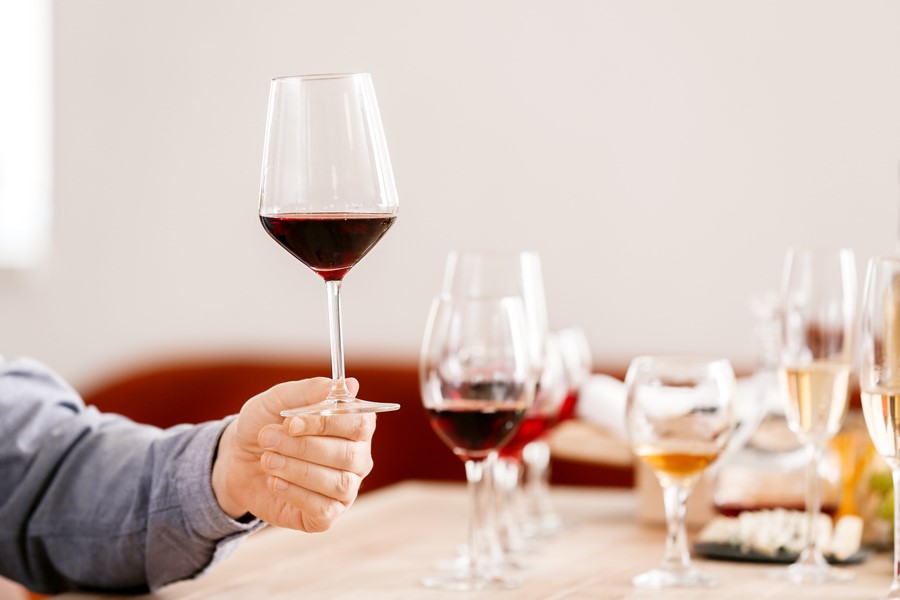How light influences wine tasting
Understanding the interplay of light, wine, and perception in tasting

The role of light sources in wine tasting is a subject of significant importance, as the observation of a wine's color relies on transparency. This process requires a light source and a consideration of the reflective, transmissive, and absorptive properties of the tasting environment and the wine glass. The interaction of light with wine affects its appearance and the perception of its qualities.
Traditionally, light sources for wine evaluation included natural sunlight, candlelight, or filament-based illumination with a matte white tone. However, with the advent of new electric lighting technologies, comparative studies have become essential to understand their impact on wine tasting. Different light sources produce varied effects, influencing the perception of wine color and age.
Historically, candlelight or filament light has been the standard for wine tasting, as it offers an effective interplay of light, wine, and vision. Diffuse lighting requires higher intensities to achieve similar effects. Modern fluorescent lighting, especially "three-band" types, has advanced to address earlier limitations. These lamps, designed with phosphor coatings to emit visible light, now offer better color rendering capabilities and are technically more sophisticated than previous models.
Experimental studies have tested various light sources with white and red wines, assessing their impact on color perception. Using reflective surfaces, such as matte white Formica, and different lighting technologies, tasters evaluated the effects on wine color, particularly the appearance of yellow in whites and oxidation in reds. The goal remains to enhance the vibrancy of youthful tones while minimizing oxidative hues, except in the case of specific wines.
Key findings indicate that light sources such as candlelight, filament bulbs, and high-resolution fluorescent lamps (like TLD 93 and TLD 95) are most effective in preserving and highlighting desirable wine attributes. Mercury discharge lamps at low pressure have also shown potential. On the other hand, tungsten halogen lights and sodium vapor lamps, due to their technological limitations and monochromatic output, are less suitable.
For optimal results, the temperature of the light source is critical. High color temperatures (above 4000 K) are recommended for whites and young reds, while lower temperatures (below 3000 K) are better suited for older reds to soften leathery tones and emphasize more muted hues like terracotta. Ideal chromatic reproduction ranges between 85% and 100%, with the best results observed in incandescent, halogen, and select fluorescent lights.
Diffuse lighting, with a Kelvin range of 4000 to 10,000, is ideal when combined with a neutral, matte white environment. Subtle violet tones in the surrounding materials can further enhance color vivacity while reducing browning. Experimental results confirm the importance of these environmental and lighting factors in achieving accurate and reproducible wine evaluations.
Founded in 2007, Vinetur® is a registered trademark of VGSC S.L. with a long history in the wine industry.
VGSC, S.L. with VAT number B70255591 is a spanish company legally registered in the Commercial Register of the city of Santiago de Compostela, with registration number: Bulletin 181, Reference 356049 in Volume 13, Page 107, Section 6, Sheet 45028, Entry 2.
Email: [email protected]
Headquarters and offices located in Vilagarcia de Arousa, Spain.